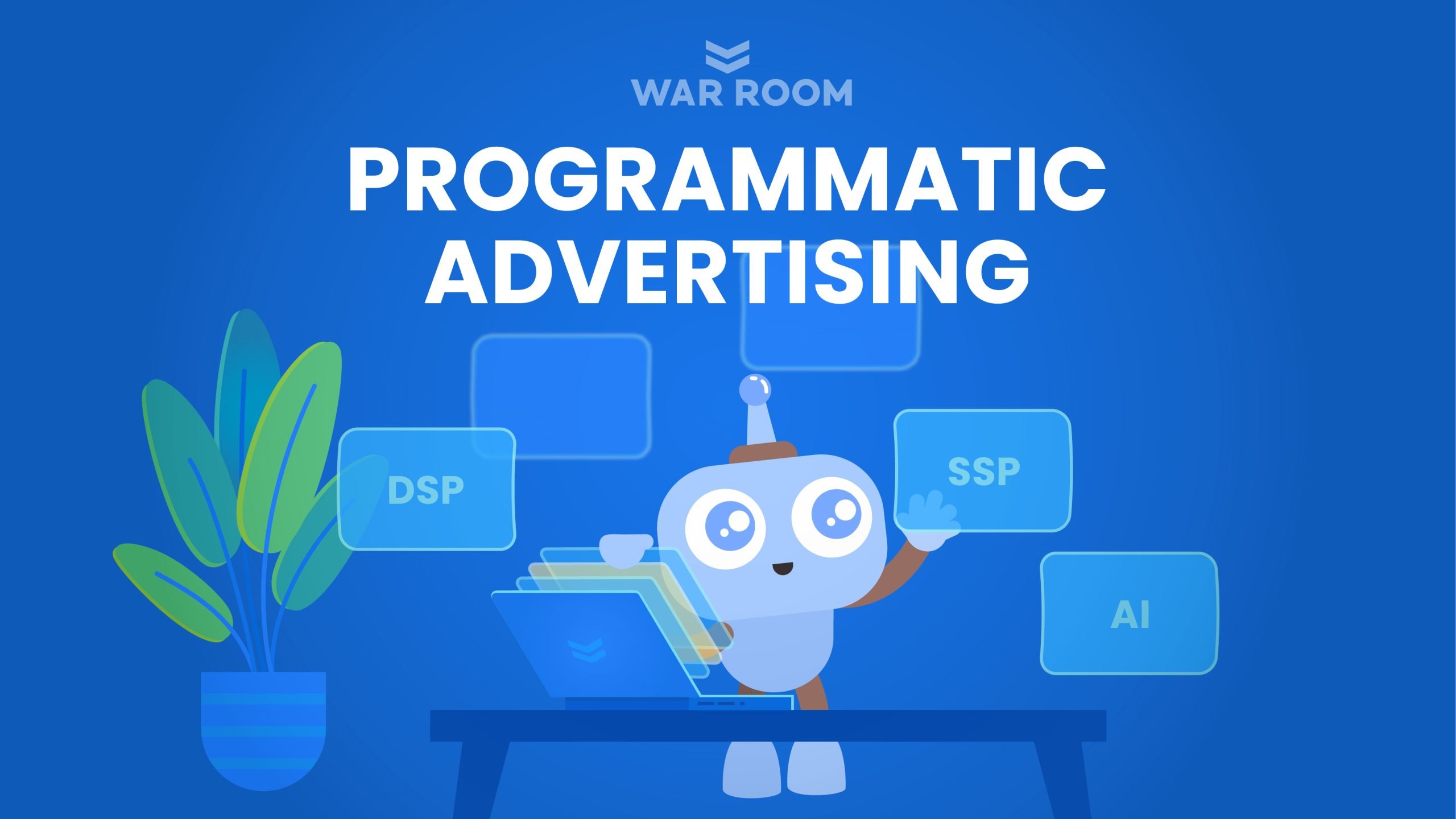Attribution models & windows and their roles in advertising are what we will be discussing in today’s article.
When it comes to digital advertising, attribution helps us better understand our ad performance and identify areas of opportunity for optimizations. The ultimate goal is to deliver a better experience of the customer journey.
What is the importance of attribution when it comes to digital marketing?
Hubspot’s 2025 State of Marketing report revealed that marketers have found using data to prove ROI has become even more important today than ever.
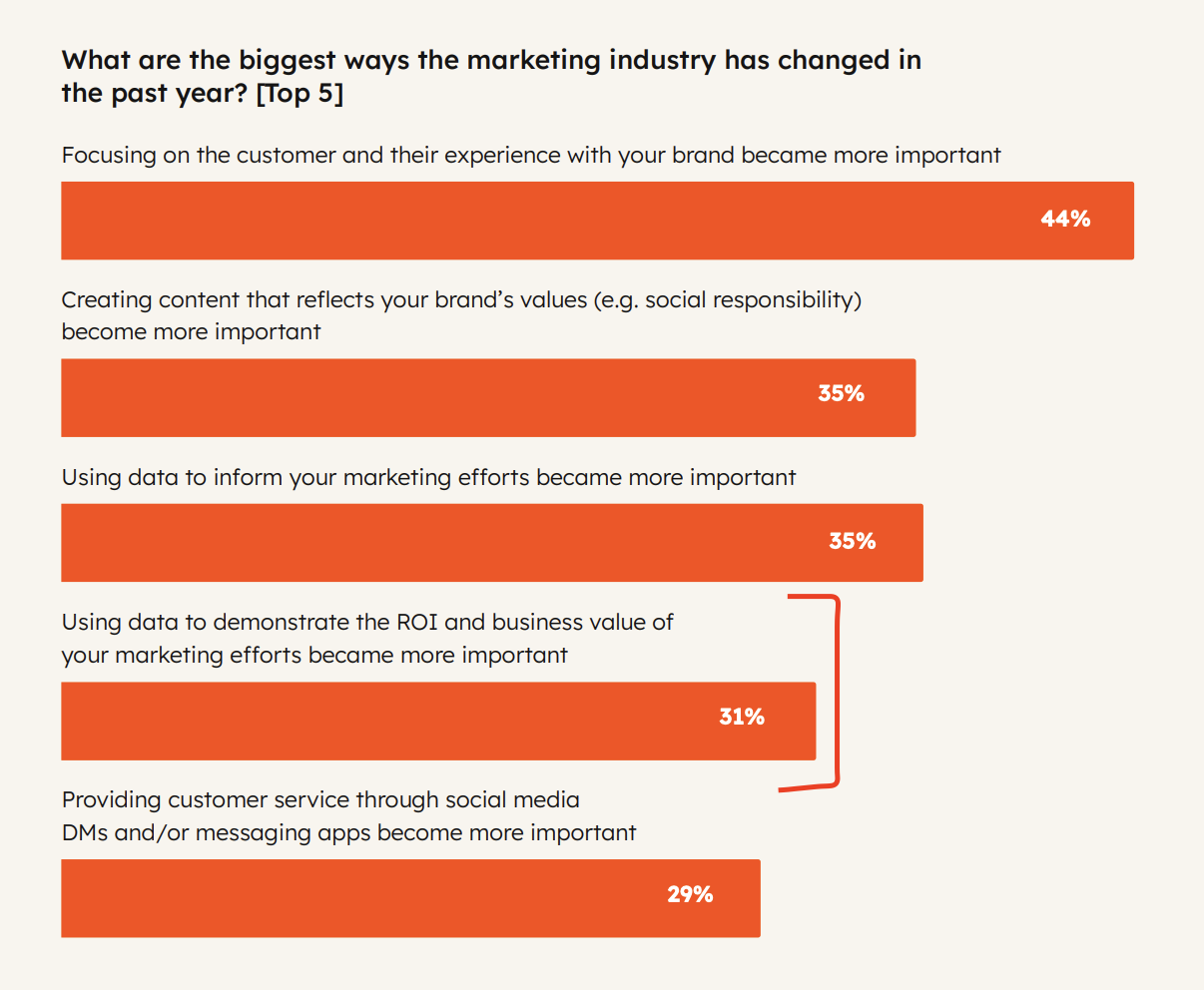
Here’s what that really means:
Marketing teams are drowning in data but starving for insights. They can’t figure out which channels actually drive results, what needs fixing, and what’s just burning budget. Every platform claims credit for the same conversion, and CMOs are asking harder questions about spend allocation.
There’s no magic attribution model that works for everyone. But understanding your options — and their limitations — helps you make smarter budget decisions. We’ll walk through the most common attribution models and explain attribution windows so you can build a measurement strategy that actually informs your media buying.
What is an attribution model?
An attribution model decides which marketing touchpoints get credit for your conversions.
Picture this:
Someone clicks your Google ad but doesn’t buy. Two days later, they see your Facebook ad and visit again — still no purchase. Then they Google your brand name directly and finally convert.
Which channel “caused” that sale? Google for the first touch? Facebook for nurturing? Direct search for closing?
That’s where attribution models come in. They’re basically the rules for dividing credit across your marketing channels. Some give all credit to the last click. Others spread it around. The smart ones use data to figure out what actually works.
Here’s the thing:
Most customers don’t convert on their first visit anymore. They research, compare, and bounce between channels before deciding. So if you’re only crediting the final click, you’re probably starving the channels that create awareness and consideration.
The model you choose shapes where you spend your budget. Get it wrong, and you’ll cut the campaigns that are actually driving growth.
Types of attribution models
Most platforms give you a few different ways to split credit. Here’s what each one actually does — and when you’d want to use them.
Keep in mind that Google retired many of these rule-based models in 2023. Still, understanding the logic remains helpful when setting up attribution on other platforms or third-party tools.
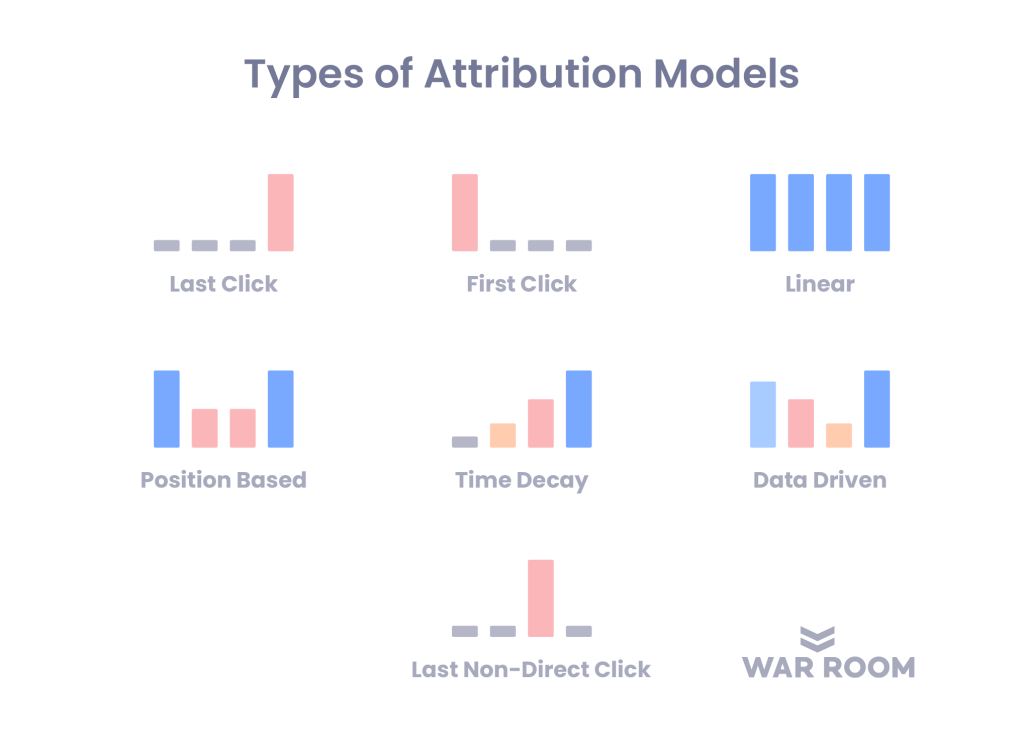
1. Linear attribution model
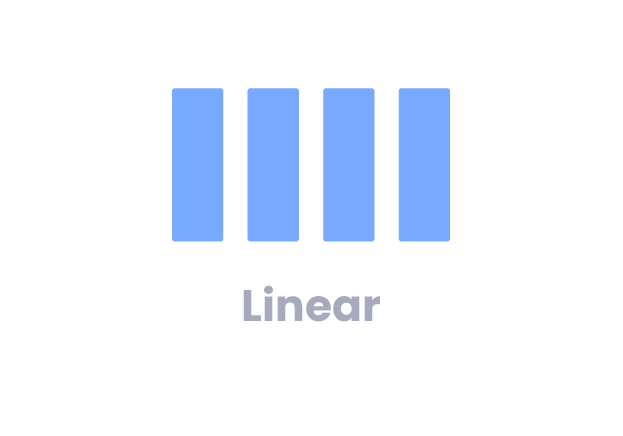
Linear attribution models look at your overarching marketing strategy and equally credits every channel the user interacts with.
For example, Richard first discovered your brand through Google search organically. Then he saw your ad through Connected TV when he was streaming videos at home, prompting him to visit your website. He doesn’t make a purchase but signs up for your newsletter. He then starts seeing retargeted Facebook ads and decides to convert.
A lot to unload here, but Linear attribution models say,

SEO, the Connected TV ad, Direct traffic, email marketing, and Facebook ads all had an equal role in driving this conversion. This is a holistic way to measure your marketing strategy. Every channel counts. You’ll then be able to evaluate which ones are the biggest conversion drivers (and which to eliminate, perhaps).
2. Time decay attribution model
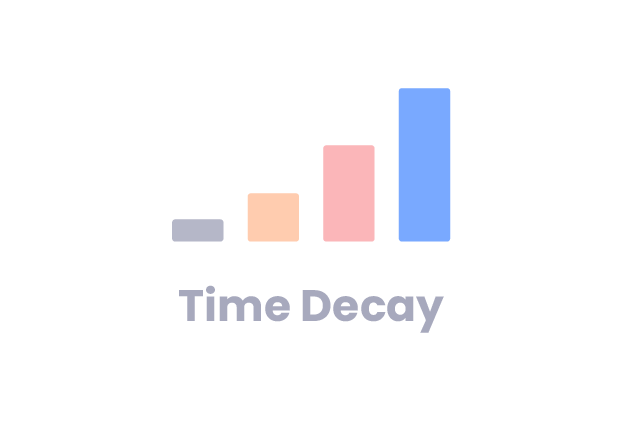
This means the very last touchpoint will get the most credit, whereas the least amount of credit would go to the first touchpoint.
So less value is put in the top-of-the-funnel channels, and advertisers can focus their ad dollars and efforts on bottom-of-the-funnel ones to improve conversion rate.
3. First click attribution model
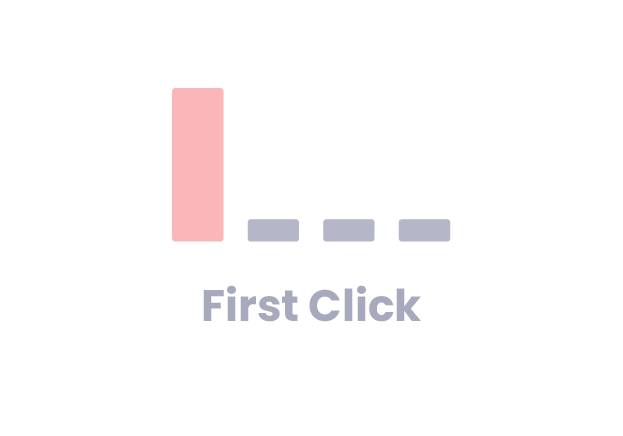
The First Click attribution model will credit the conversion to the very first touchpoint of the user.
Example:
Sally sees a LinkedIn ad for a creative agency’s eBook, “2021 Design Best Practices”. She’s interested, clicks on the ad, and fills out the form on the landing page to download the resource. She is then entered into an email drip campaign. A few days afterward, she received the first follow-up email from the agency, inviting her for a 15-minute consultation. Sally agrees and ends up hiring the agency for her business needs.
If it was the First Click attribution model, the email doesn’t get the credit, but instead, it’s the LinkedIn ad.
This model is helpful when it comes to driving new consumers. Once you identify how most people come through to your site or landing page, you’d be able to dedicate more ad dollars to run a successful campaign.
4. Last click attribution model
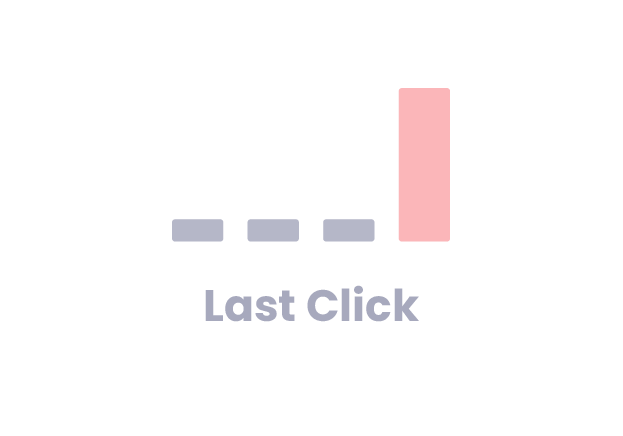
Let’s say Sabrina is scrolling through her Instagram feed and see an ad for a skincare product that grabs her interest. She clicks on the Instagram ad, checks out the skincare company’s site, reads about the product, and leaves.
She then spends the next few days researching more about it by watching Youtube videos and reading Google reviews. Sabrina finally decides that it’s the right product, and since she already knows the brand name, she fills out the URL and goes to the site to make a purchase.
In the case of the Last Click attribution model, the conversion would be credited to Direct Traffic. It’s a great model to determine which channels drive the most conversions.
5. Last non-direct click attribution model
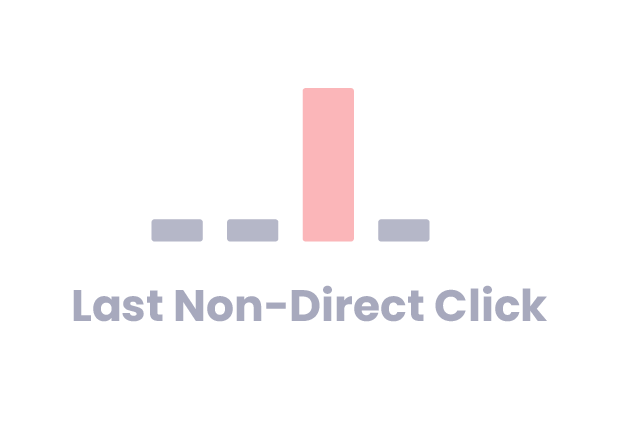
This alternate model shouldn’t be mixed up with the Last Click attribution model. The Last Non-Click Direct attribution model will give credit to the last touchpoint that isn’t direct!
A simple example would be: someone seeing your Display Ad and clicks on it but doesn’t make a purchase. But the next day, they type in your website URL and convert. Your Display Ad would then get the credit in the Last Non-Click Direct attribution model.
This model helps find marketing triggers that drive direct traffic.
6. Position-based attribution model
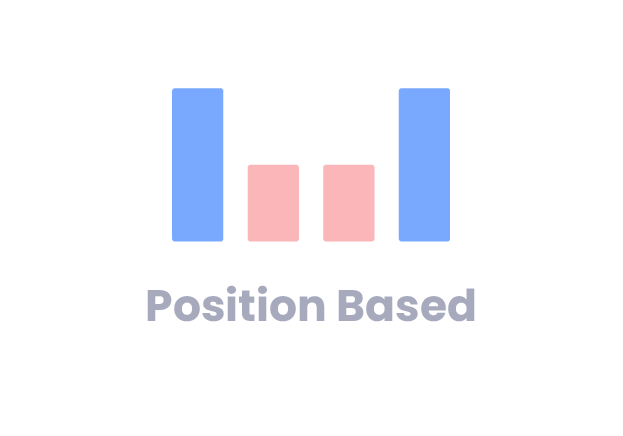
This distributes credit to the most important clicks/touchpoints.
Let’s say Zach uses Microsoft Bing to search for “best barbeque grill.” He clicks on your blog article you worked hard on SEO for. He proceeds to browse your site. Then in the next few days, Zach is targeted by your social display ads. In the end, he converts through a Pinterest shopping ad when he was browsing pins for barbeque grills!
Under the Position-Based attribution model, it emphasizes the values of the first and last click the most. That means organic search/SEO and Pinterest ad contributed the most in driving this conversion. Because the first touchpoint brought in the customer acquisition, and the last touchpoint drove the conversion.
7. Data-driven attribution model
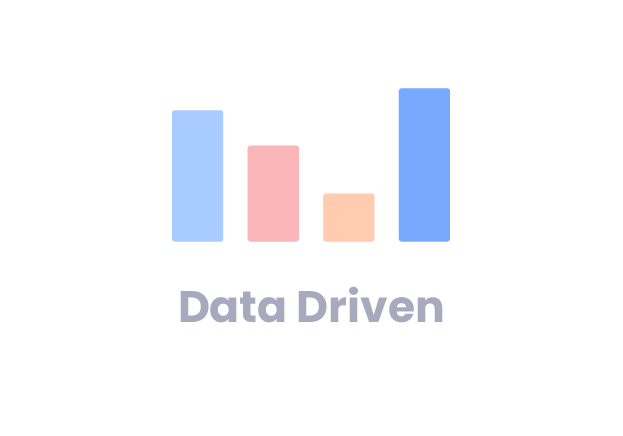
The data-driven attribution model uses machine learning to analyze your actual conversion paths and assigns credit based on what’s really driving results.
Google retired most volume requirements in 2023. Most conversion actions are now eligible for data-driven attribution regardless of volume, though some conversion types still reference legacy thresholds.
This is the smartest option when available — it learns from your specific customer behavior instead of following arbitrary rules.
Here is a detailed example explaining how this model works by Google:
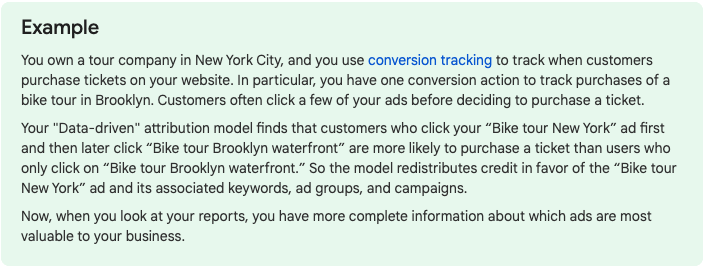
What is an attribution window?
An attribution window sets how long after someone sees or clicks your ad you’ll still give that ad credit for conversions. Think of it as your “claim period” for taking credit.
Sometimes there’s a gap between when someone sees your ad and actually converts.
For example, imagine someone sees your Pinterest ad for a meditation app on their morning commute but doesn’t download it. That evening, after a stressful day, they remember the app and download it. Should Pinterest get credit? That depends on your attribution window.
Attribution windows track clicks, views, and more — so you can properly credit the right channel instead of lumping everything into “organic traffic.” Without them, you’re flying blind on what’s actually driving results.
Here’s the thing:
Your campaign type shapes your window length. Brand awareness campaigns typically use shorter windows based on impressions. Conversion campaigns need longer windows to track the full customer journey from first touch to purchase.
Current attribution windows by platform
-
Meta (Facebook/Instagram): 7-day click / 1-day view (standard)
-
TikTok: 7-day click / 1-day view (default); options up to 28-day click
-
Snapchat: 28-day click / 1-day view (default)
-
LinkedIn: 30-day click / 7-day view (typical); Event Registration uses 30-day click / 30-day view since April 2025
-
Pinterest: Click + view tracking only (engagement windows removed in 2025)
It’s worth noting as well, Apple’s iOS updates hit Meta hardest — they dropped from 28-day to 7-day click tracking. That’s why your Facebook attribution feels less reliable than it used to.
Pro tip: Test different windows when launching new channels. Start TikTok with a shorter window to isolate its true impact, then expand once you understand its role in your funnel.
The importance of cross-channel attribution
In all the examples above, different attribution models work for different campaigns.
Brands advertise on multiple channels at the same time, and these strategies should be complementing one another.
Let’s say someone finds your website through Google PPC search ads. They come to your site again three days later after clicking on a Facebook ad. Then they convert after listening to an audio ad by clicking on the companion banner ad on Spotify. That’s awesome! Since the lead converted, perhaps you have a new sales funnel you want to put them through. But what if, at the same time, you’re running a Display Ad campaign, and you don’t want to show the current ads to this lead anymore?
Typically when you run digital ads on these platforms, the data are in silos–they don’t talk to each other. Youtube wouldn’t know that the user already saw your LinkedIn InMail ad.
Your ad channels aren’t communicating with one another and this isn’t an ecosystem! It’s a common challenge many brands struggle with.
That means the person who converted might still be seeing your ads, which is spending your precious ad dollars! How do you prevent that from happening?
Say hello to cross-channel attribution.
If your advertising platform has cross-channel attribution functions, this means that whenever a new user sees your ads, they would be assigned a number, like #103. They would be identified as #103 on all of your ad channels, like Facebook, Google, Instagram, Youtube, etc. So you could move #103 as a target audience for a new campaign.
Programmatic advertising platforms like Kedet act as a cross-channel attribution solution. It can sync all channels into one centralized database and serve complex campaigns like a breeze. The goal is to deliver clean, transparent data and save you ad dollars.
Cross-channel attribution is no doubt the future of digital advertising. Learn more about our services here.
The reality about attribution today
Here’s what most marketers get wrong:
They obsess over finding the “perfect” attribution model. Spoiler alert — it doesn’t exist. Every model tells you something different, and they’re all partially right.
The smarter approach? Start with what your platform gives you (usually data-driven attribution), then layer in additional context. Look at your customer surveys. Talk to your sales team. Check which channels your best customers mention during onboarding calls.
Attribution models show you correlation, not causation. They’re directional, not gospel.
What actually matters
Your attribution setup should help you make better budget decisions — that’s it. If you can’t connect your attribution insights to actual budget shifts, you’re just collecting vanity data.
The best attribution strategy combines multiple viewpoints:
-
Platform attribution for optimization signals
-
Customer feedback for qualitative context
-
Cohort analysis to see long-term impact
-
Marketing mix modeling for big-picture budget allocation
Where most teams get stuck
Attribution gets complicated fast when you’re running campaigns across multiple platforms. Google says your search ads drove the conversion. Meta claims their retargeting ads were the real driver. TikTok insists their brand awareness campaign started the whole journey.
They’re all taking credit for the same sale.
That’s where cross-channel deduplication becomes critical. You need a way to see the full customer journey without double-counting conversions or crediting every platform for the same result.
This is exactly why we built Kedet — our attribution and optimization platform that connects the dots across all your channels. It uses deduplicated conversion tracking to show you what’s actually working, then automatically shifts budget toward your best-performing campaigns.
Because honestly? Most attribution problems aren’t solved by picking a better model. They’re solved by having cleaner data and smarter automation.
Ready to see your attribution data without the platform politics? Let’s talk.
Let's Work Together
Say hello to customized advertising strategies that convert.
Get in touch with our programmatic experts today!




